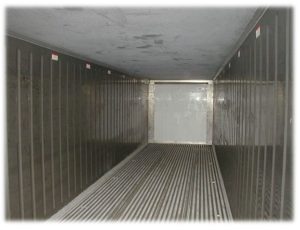There are a lot of trucking options available in Canada nowadays to transport any type of freight. Among all the trucks used in transporting freights, dry van trucks and reefer trucks are the most commonly used.
It is not economically sound to convert a dry freight container into a reefer because it would require tasks such as insulation installation, the adding of rigid metal floor boards, vented doors, and more. Although insulated or vented dry vans are better suited for reefer conversion, the main hurdle they present is the adding of a reefer unit and replacement of the plywood interior. It will simply be cost and maintenance effective to invest in a reefer trailer and then utilize it to haul dry bulk as opposed to go about the process to convert dry van to reefer. This article will explore the cross-utilization of reefer trailers to haul perishable and non-perishable goods. The advantageous fact about reefers is that they have both cooling and heating capabilities.
It is the foam-type insulation that retains heated or cooled air inside and maintains perishable goods at the correct temperatures. It essentially is an important feature that is one of the main distinguishing features between dry vans and reefers. The more temperature sensitive the freight, the greater the need for insulation. Partially insulated walls are inadequate in multi-compartment trailers due to economic reasons. Reefer trails are not designed for the long haul, with the average trailer having a 10-year life cycle with an average of 3500 hours running time per year for a total of 35,000 hours. Most fleets only expect to use trailers for the corresponding period of time before swapping them out for newer models, sometimes even a few years before the conclusion of the life cycle. However, there are ways to increase the lifespan of refrigerated trailers if proper maintenance and upgrading initiative is taken. If you’re interested in investing in a refrigerated van, then read about the best reefer trailer to buy.
Reefer/Produce Trucking Season
As spring season approaches, citrus goods begin to ship out from the southern parts of the North American continent. As autumn begins to come around, northern producers of fruits and vegetables see growth in shipping volumes. Prior planning and analyzation of season trends prevent head-haul runs. Head-haul runs are the transport of freight along a route in one direction in great volumes in ratio to the number of back-hauls. Therefore, the return trip on head-haul runs often will result in empty hauls or deadheads.
A general rule of thumb is to only utilize reefers for dry freight when there is a need to place a trailer in position to haul a refrigerated load such as on a back-haul.
Challenges associated with Shipping Dry Freight in Reefers
There are some inherent challenges with shipping dry freight in reefer trailers. Firstly, the added weight of the reefer unit decreases load capacity by 500-1000 lbs., a 1-2% reduction. The extra insulation and fiberglass panels take away up 6 inches in cubic space which causes a reduction in load size capacity. Moreover, floor loaded products are not suitable for reefer because the rigid metal lining on the trailer floor can cause indentation damage to the freight.
Moisture buildup is also a concern with reefers but when utilizing it for a dry load turning on the trailer air conditioner before loading will dry up any condensation.
Trailer prepping is another obstacle. It is an important to ensure that dry goods carried in refrigerated trailers meet the transportation standards that of dry vans. For example, load stabilization methods differ for dry vans and reefers. Dry van freight is better secured with air bags whereas refrigerated goods respond better to load bars due to circulation requirements.
The aforementioned information is important to consider if you are thinking to convert a dry van to reefer especially with a refrigerated van conversion kit.



